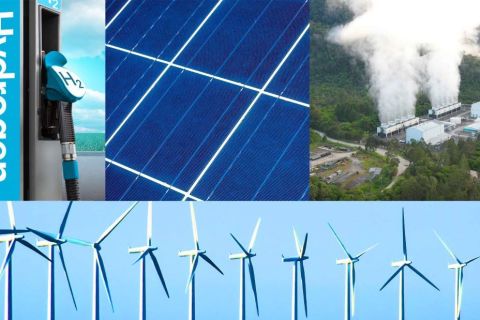
NEW YORK—What is clear is an obvious need for more gas-fired power plants in New York and New England, especially considering the number of coal-fired and nuclear power plants being closed. Exactly how that translates to demand for more gas, and thus more pipeline capacity into the region, is not clear at all.
On aggregate, gas producers and carriers are eager to supply a growing demand market. But several speakers at Day Two of the S&P Global Platts annual Northeast Power & Gas Market Conference on May 23 detailed several variables in the equation of how, where, and when new capacity and new volumes might be available.
One, Dan Dolan, president of the New England Power Generators Association (NEPGA), questioned whether much new gas is going to be needed at all. His calculations show gas demand from now to 2020 only growing by 2 percentage points from its current share of the regional generation fuel balance.
“Given the increase in renewables and imports [of power from New York and Canada] I am having a hard time seeing the number of molecules needed rising all that much,” Dolan said.
If indeed gas demand only rises modestly in the next few years, it may be met by debottlenecking the existing delivery system.
Two of the major routes into New York and New England originate in Canada:
- The Iroquois Pipeline, co-owned by TransCanada and Dominion, and running from Iroquois, Ontario on the St. Lawrence River to New York City and Long Island; and
- The Portland Natural Gas Transmission System.
The Portland system connects the TransQuebec and Maritimes Pipeline (owned by TransCanada and Gaz Metro) at the Canadian border and the Maritimes and Northeast Pipeline at Westbrook, Maine (owned by Spectra Energy Partners, ExxonMobil and Emera, Inc.) with the Tennessee Gas Pipeline System (owned by Kinder Morgan Inc.) near Boston.
Union Gas, which as part of Spectra Energy was acquired by Enbridge, supplies both of those trunk lines into the northeastern U.S. from its Dawn Hub southeast of Sarnia, Ontario. That facility has 116 Bcf of merchant storage. According to Patti Piett, director of storage and transmission marketing and utilization at Union Gas, the company is adding 1.2 Bcf/d of takeaway capacity from the hub to
Étienne Champagne, vice president of construction and development at Gaz Métro, said that his company had expanded its LNG plant near Montreal three times to a current capacity of 10 Bcf, and that it is optimizing its Portland Line.
Even if a near-term increase in gas demand can be met through incremental increases in throughput, greenfield capacity will still need to increase in the long term. As one example, Dolan noted that New England is the only region of the country where oil is the primary fuel for home heating. Most homes cook on gas, but it is not clear if the existing distribution network could support a significant expansion of gas heating.
New England comprises six different states with widely divergent political climates. There is no consensus, for example, on who would pay for new pipelines.
Despite the lack of clarity on long-term demand, the gas industry is still keen to expand into
“There have been some projects approved by the Federal Energy Regulatory Commission but the State of New York has not issued permits,” said Dena E. Wiggins, president and CEO of the Natural Gas Supply Association.
“I don’t think it’s right for
Recommended Reading
Energy Transition in Motion (Week of Sept. 6, 2024)
2024-09-06 - Here is a look at some of this week’s renewable energy news, including $7.3 billion in clean energy funding for rural Americans.
US Navy Taps Sage Geosystems for Geothermal Initiatives in Texas
2024-10-03 - The expanded collaboration with the Department of Defense follows Sage-led geothermal initiatives at Fort Bliss and the Ellington Field Joint Reserve Base in Texas.
Sage, California Resources to Partner on Geothermal, Energy Storage
2024-09-25 - Sage Geosystems and California Resources Corp. signed of a memorandum of understanding to pursue subsurface energy storage and geothermal power generation in California.
Energy Transition in Motion (Week of Sept. 27, 2024)
2024-09-27 - Here is a look at some of this week’s renewable energy news, including a commitment of more than $116 billion annually in renewables and grids.
Energy Transition in Motion (Week of Oct. 4, 2024)
2024-10-04 - Here is a look at some of this week’s renewable energy news, including the startup of a solar module manufacturing facility with an annual 2-gigawatt capacity.
Comments
Add new comment
This conversation is moderated according to Hart Energy community rules. Please read the rules before joining the discussion. If you’re experiencing any technical problems, please contact our customer care team.




